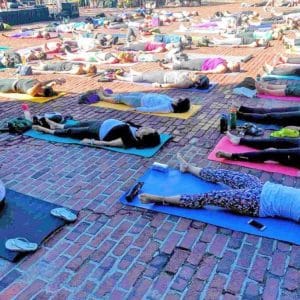Fall Back to Sleep! It’s Daylight Savings!
Sunday night at 2:00am we got to turn back our clocks one hour and get some much needed snooze time. According to this video by the Globe and Mail, DST originated from an essay written by Benjamin Franklin that encouraged the change to save on candles, and was a bit of a hit to those that were sleeping in! It was generally disregarded as a joke, until such a practice became widely adopted in 1916 to conserve energy during World War I.
Daylight Saving Time (DST) as you know occurs twice a year, in March we Spring Forward one hour and in November we Fall Back. There is often debate in Canada over the value of DST, and because it is a provincial responsibility – some have even opted out. But usually the disgruntled come out with their arguments around the Spring Forward DST, because Fall Back DST is pure bliss!
These arguments spring up because the loss of sleep has impacts on stress levels, productivity, well-being, and results in increased instances of heart attacks and traffic accidents. Keep in mind that these arguments focus on effects that occur over just a couple of days surrounding the change, but DST was created so that we can reap the benefits of added sunlight for eight months!
As Popular Mechanics puts it:
“It is a human attempt to force our lives to fit the natural world in a more sensible way, to put ourselves into a pattern of living that benefits our minds and bodies.”
Daylight is crucial to my functioning, and yours too. Research has shown that the vitamin D that we get from the sun can help to reduce your risk of multiple sclerosis, heart disease, diabetes, and cancer. It also helps our bodies absorb calcium so we can build strong bones, and facilitates our immune system functioning. Exposure to sunlight also seems to increase serotonin levels, improving your mood and overall mental health.
Negative impacts should be limited to a couple of days during the Spring Forward time change in March, and hopefully you’ll be reaping the benefits for eight months! However, your body can be confused by even subtle disruptions to our circadian rhythm, and yoga is a great way to help you adapt to the change. Yoga has the ability to energize you, exhaust you, or calm you and prepare for sleep. So if you find yourself oddly energized tonight when you are supposed to be winding down, try these poses:
Wide angle seated forward fold
Reclined twist
and our favourite, savasana…
Sleep well yogis!





